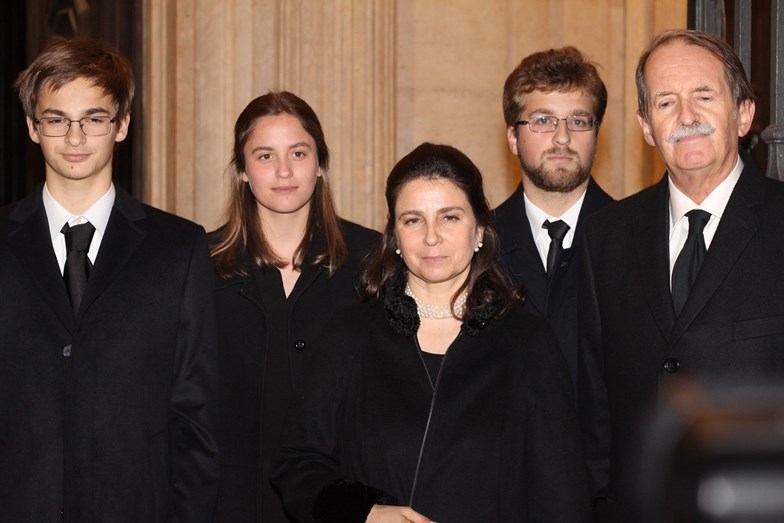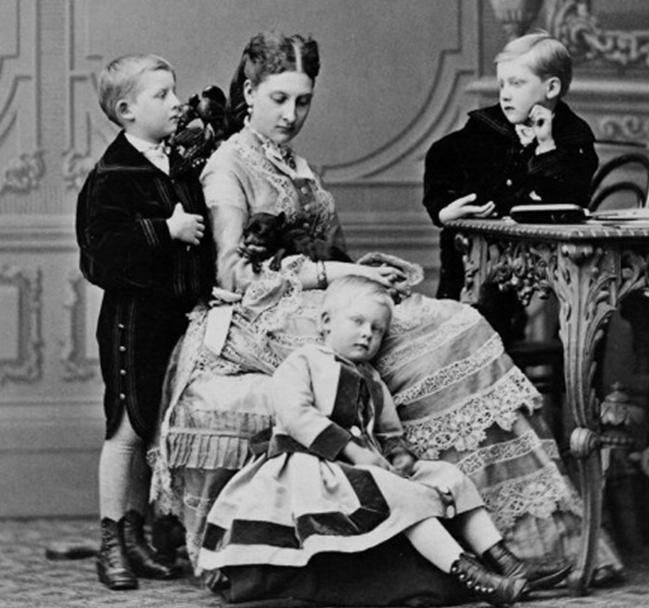
King Manuel II and Queen Augusta Viktoria of Portugal at their home in Twickenham, London
Though Queen Charlotte was German, De Valdes y Cocom's research shows the queen was directly descended from a branch of the Portuguese royal family, related to Margarita de Castro e Souza, a.

Kaiser Wilhelm II with Queen consort of Portugal and the Algarves Maria Amélia and Carlos I of
Family tree of Portuguese monarchs. 4 languages. Azərbaycanca; Español; Magyar; Português; Edit links. King of Portugal 1863-1908 r. 1889-1908: Afonso Duke of Porto 1865-1920. Manuel II King of Portugal 1889-1932 r. 1908-1910: Luís Filipe Prince Royal of Portugal 1887-1908: Elisabeth of Thurn and Taxis 1860-1881: Miguel.

Portuguese Royalty Royal, Royal tiaras, Royal weddings
In 1952, Duarte Pio's father, Duarte Nuno, was the first Portuguese royal to move back to the country following the revolution and exile of the monarchy and today, the family enjoys a somewhat semi-official role in Portuguese society. Read More. Inside the Downton-worthy, star-studded wedding of Michelle Dockery and Jasper Waller-Bridge.
.jpg)
Classify the Portuguese Royal Family
The Portuguese House of Burgundy, known as the Afonsine Dynasty, was the founding house of the Kingdom of Portugal.Prior to the independence of Portugal, the house ruled the feudal County of Portugal, of the Kingdom of Galicia.When Afonso Henriques declared the independence of Portugal, he turned the family from a comital house to a royal house which would rule Portugal for over two centuries.

Last Portuguese Royal Family early 20th century Família real, Monarquia, Português
But by the early 1800s, the Portuguese Royal Family found itself weakened and based itself in Brazil, part of its empire. In the decades that followed, the thrones of the two countries parted ways.

Pin de João Machado en Portugal royal family
The Most Serene House of Braganza (Portuguese: Sereníssima Casa de Bragança), also known as the Brigantine dynasty (dinastia Brigantina), is a dynasty of emperors, kings, princes, and dukes of Portuguese origin which reigned in Europe and the Americas.. The house was founded by Afonso I, 1st Duke of Braganza, illegitimate son of King John I of Portugal of the House of Aviz, and would.

Duquesa de Bragança e Infanta Maria Francisca falam sobre o casamento A Monarquia Portuguesa
In 1807, when the Portuguese royal family left Portugal for Brazil, Portugal was an absolute monarchy. However, Napoleonic troops and political attitudes fostered by Spain's Cortes of Cádiz had brought revolutionary ideas to Portugal. In 1821, João VI, under pressure,.
Classify Portuguese Royal family AnthroScape
This is a list of Portuguese monarchs who ruled from the start of the Kingdom of Portugal, in 1139, to the start of the Portuguese Republic with the 5 October 1910 revolution.. During the 800 years, the kings had different titles and pretensions. Two kings of Portugal, Ferdinand I and Afonso V, is also the Crown of Castile.When the House of Habsburg took over, the kings of Spain, Naples, and.

Pin de P A M Monteiro em Proud of Portugal História de portugal, Monarquia portuguesa, Família
House of Bragança, ruling dynasty of Portugal from 1640 to 1910 and of the empire of Brazil from 1822 to 1889. The first duke of Bragança was Afonso (d. 1461), an illegitimate son of the Portuguese king John I. When Portugal gained its independence from Spain in 1640, João II, 8th duke of Bragança,

The Portugese Royal Family. 1854. Photograph of a group of the children of Maria II of
The National Palace of Queluz, Portugal: A Royal Rendezvous. The National Palace of Queluz was the royal home of Queen D Maria I and her husband Dom Pedro III (prince regent). The palace showcases the lifestyle of the royal family from the second half of the 18th century to the beginning of the 19th century. This place will transport you back.

Portuguese Monarchs Family Tree YouTube
Two kings of Portugal, Ferdinand I and Afonso V claimed the crown of Castile and waged wars in order to enforce their respective claim. Ferdinand I managed to be recognized as King of Galiza, in 1369, although his dominance of the region was short-lived. When the House of Habsburg came into power, the kings of Spain, Naples, and Sicily also.

Royals of Portugal Portuguese Royal Family, King Dress, Aristocracy, Prince And Princess, Royal
Portugal had a royal family for 771 years, beginning in 1139. The monarchy ended in 1910. Portugal is now a democracy under the leadership of Prime Minister, António Acosta, who was appointed by a president that the people voted into office. In 1139 Afonso Henriques declared himself king of Portugal after he united the counties Galicia and.

Classify Portuguese Royal family AnthroScape
Duarte Pio, Duke of Braganza (Portuguese: Duarte Pio de Bragança: born 15 May 1945) is the current Duke of Braganza, claimant to the title of King of Portugal of the dormant Portuguese throne, as the head of the House of Braganza.The Miguelist Braganzas, to whom Duarte Pio belongs as great-grandson of King Miguel I, is a cadet branch of the House of Braganza.

Portuguese royal family, Ferdinand, Photo
introductionset. The Unique truth. The death of Dom João VI in 1826, created serious problems to the political situation in Portugal, due to the creation of two opposite fractions in the country, led by the Infants of Portugal. The Liberal Fraction, led by Dom Pedro, who was nominated Imperor of Brazil, in 1822, and the Absolutists Fraction.

The Portuguese Royal Family
The Kingdom of Portugal was a monarchy in the western Iberian Peninsula and the predecessor of the modern Portuguese Republic.Existing to various extents between 1139 and 1910, it was also known as the Kingdom of Portugal and the Algarves after 1415, and as the United Kingdom of Portugal, Brazil and the Algarves between 1815 and 1822. The name is also often applied to the Portuguese Empire.

Classify the Portuguese Royal Family
The Portuguese royal court transferred from Lisbon to the Portuguese colony of Brazil in a strategic retreat of queen Maria I of Portugal, prince regent John, the Braganza royal family, its court, and senior officials, totaling nearly 10,000 people, on 27 November 1807. The embarkment took place on the 27th, but due to weather conditions, the ships were only able to depart on 29 November.